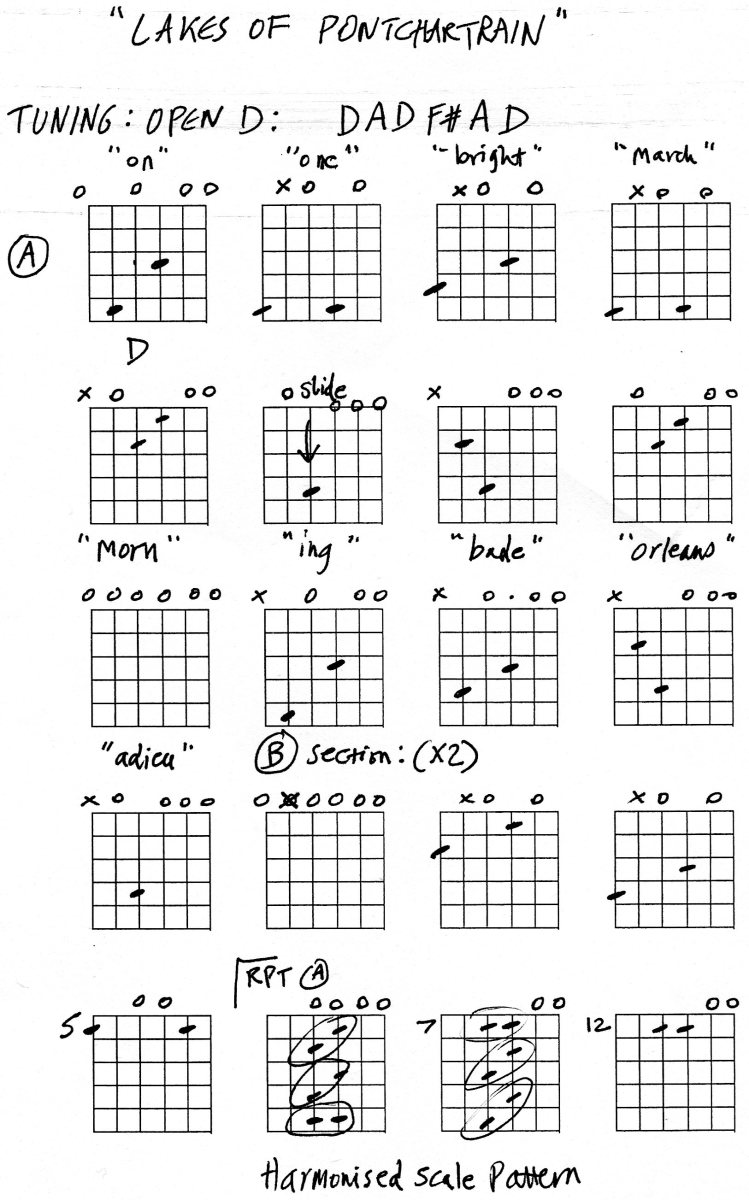Drop D tuning involves lowering the bass E string to D, creating a rich sound ideal for various genres like blues and rock. This tuning simplifies playing power chords, which are prevalent in songs in dropped D by bands like Nirvana and Foo Fighters.
Notable drop D songs include "Everlong" by Foo Fighters, where the tuning enhances the riff and overall musical texture. Many bands use drop D tuning to create distinctive sounds, as seen in music videos and live performances.
The tuning allows for flexible chord options and is favored for its ability to produce powerful, resonant chords and riffs.
How To Tune A Guitar To Drop D Tuning
What is drop d tuning?
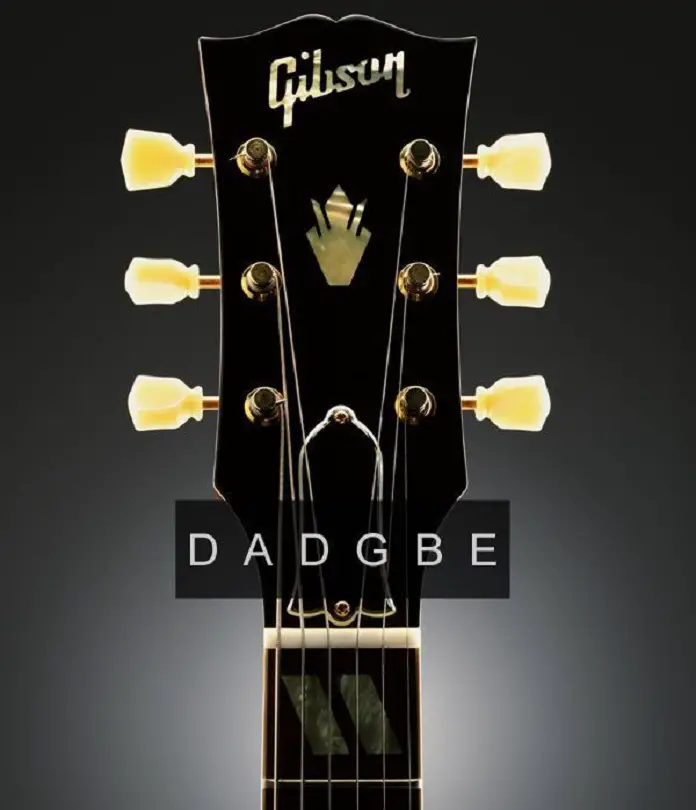 That said, some pro artists use many other tunings, in which they might re-tune one or more strings up or down. Sometimes the tuning results in a pleasant chord when all the open strings are strummed, and sometimes not.
That said, some pro artists use many other tunings, in which they might re-tune one or more strings up or down. Sometimes the tuning results in a pleasant chord when all the open strings are strummed, and sometimes not. 
Blues Drop D Song - Statesboro' Blues
Dropping the bass string two steps down from E to D completely changes the flavor of the music and also gives us some flexibility in chord fingering. For example, we don’t have to fret the bass E when playing a D major chord, which frees up fingers for more interesting work around the other strings.
The dropped D note also gives us a low, low note to punctuate the blues sound and counter balance the melody. Done in the right way, it has a powerful effect and has also been used extensively in traditional and modern folk songs by many well known artists.
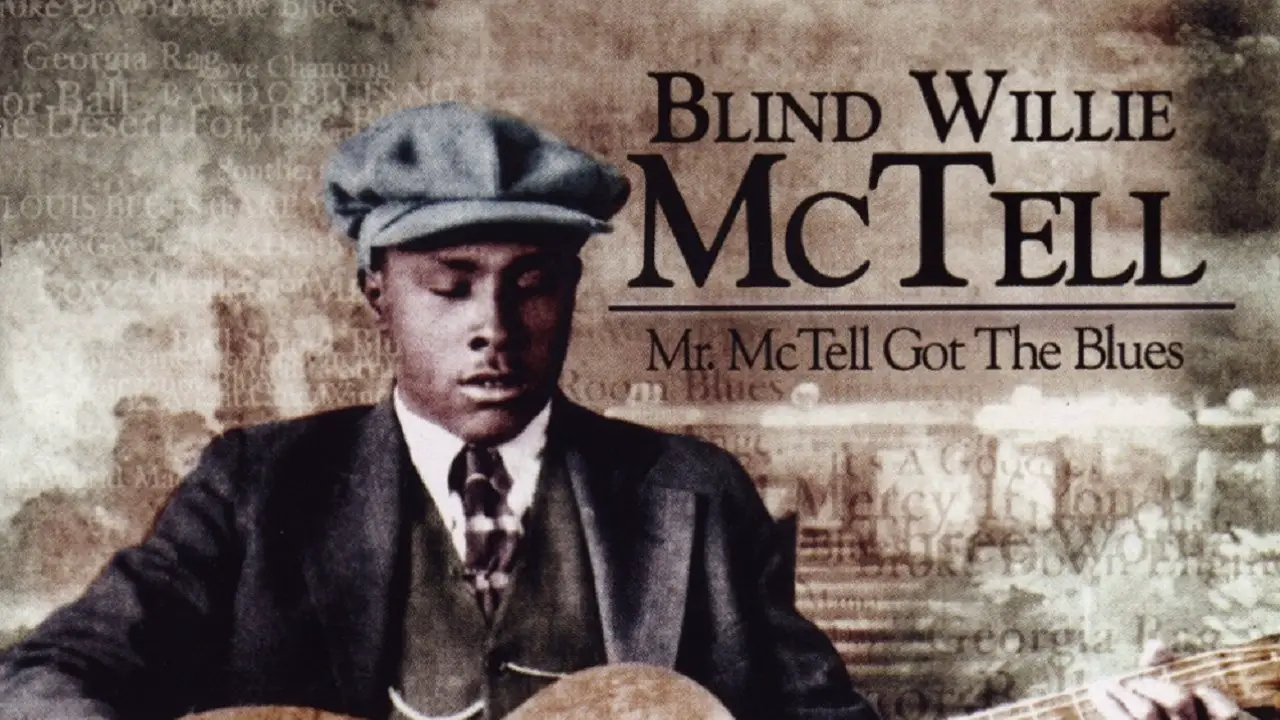 We can hit the bass string and let it ring, use a monotonic thumb technique (where we just strike one bass with the thumb) or alternate our thumb strokes and damp the basses in a Travis picking style.
We can hit the bass string and let it ring, use a monotonic thumb technique (where we just strike one bass with the thumb) or alternate our thumb strokes and damp the basses in a Travis picking style.
Whichever style we play, it’s necessary to adapt the chords in some cases. For instance, when playing G7 it sounds discordant if we hit the bass E open, or if fretted on the 3rd fret like we normally would, so we just don’t hit it at all.
We could also move up the fret board to form a G and fretting the bass E on the 5th fret – its just a matter of choice and depends upon the style of the song you are playing. (These chord variations are shown in the video at 1m:40s.) We can play any A chord shape we like, but without hitting the bass E note.
At 2m:50s I play an instrumental in dropped D tuning taken from the playing of Stephan Grossman – it’s interesting as the basses walk up and the trebles walk down!
At 3m:34s I show how to drop other strings to form open D and then play a low down blues by Blind Blake ‘Down The Country’.
Download Statesboro' Blues Guitar Tab PDF by Willie MccTell - A Blues In Drop D Tuning
TIPS FOR PLAYING IN DROP D GUITAR TUNING
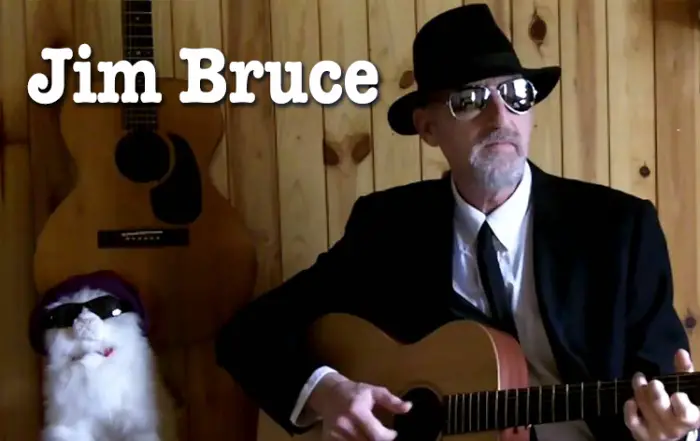
WHAT IS DROP D BLUES GUITAR TUNING?
How To Tune The Guitar To Open D
:
Death Letter in Open G Guitar Tuning.mp3
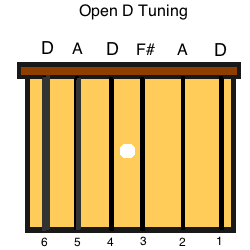 Open D is good for bottleneck - not so good as open G, but there are plenty of other songs to choose from. I generally start with a Blind Blake song called 'Down The Country' which is a slow delta blues sound.
Open D is good for bottleneck - not so good as open G, but there are plenty of other songs to choose from. I generally start with a Blind Blake song called 'Down The Country' which is a slow delta blues sound. 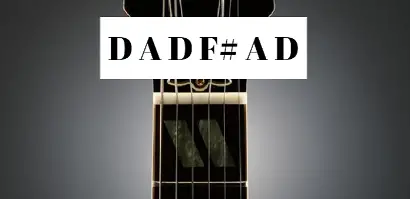
How To Tune A Guitar To Open D Step By Step


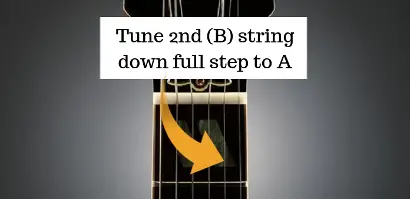

| String | Normal Tuning | Adjustment Needed | Open D Tuning |
|---|---|---|---|
| 6th | E | Take down 2 frets | D |
| 5th | A | Leave as is | A |
| 4th | D | Leave as is | D |
| 3rd | G | Down 1 fret | F# |
| 2nd | B | Down 2 frets | A |
| 1st | E | Down 2 frets | D |

Open D Blues Songs
Guitar Open D Tuning, Guitar chords
Open D tuning on guitar is D, A, D, F sharp, A, D, low to high. To change from standard tuning, strings 6,1 and 2 are lowered by a tone (or 2 frets) and string 3 is lowered by a semitone (1 fret)
It's handy to sound the open 4th string (D) as a reference note. If you take the pitch a little lower, then bring back up to pitch, the guitar will stay in tune better.
So many great songs are played in this tuning, Joni Mitchell songs such as Big Yellow Taxi, You Turn me on (I'm a radio), Peoples' Parties, Morning Morgantown. Here we'll be looking at how the tuning is used in Irish music, and specifically how Paul Brady plays The Lakes of Pontchartrain - but many of the chords can be used for different Irish songs.
I needed to learn this song in a hurry for a gig, so first I looked on YouTube for the Paul Brady version, and then found a great chord lesson by Paul Goulet, that breaks down the chord arrangement. I have followed it fairly closely in the chord chart below, but it's not exactly the same.
Guitar Chords in Open D Tuning
Chord chart info
The chord shapes follow the Paul Goulet tutorial fairly closely. here is the structure - the A section is followed by two B sections, then one more A section to finish - this is one verse, and then the whole thing repeats, with an optional link so you can prepare for the next verse.
Harmonised scale material
At the end of the chord chart there is a harmonised scale which you can use to create fills in this tuning, or to play parts of the tune. Although it's hard to visualise, the middle two strings 4 and 3 have not been changed from standard tuning, so standard patterns like this will work. Each group of two notes is a mini -chord that works with the open strings.
Capo
The video tutorial here is in the key of D - Paul Brady uses a capo in fret 3, which means the song is in F - too high for me to sing, and it's difficult even in the key of D. Paul Brady does fantastic and probably unbeatable versions of classic Irish songs. Check out other clips from the BBC TV Transatlantic Sessions.
More info on tunings
The 1,4 and 5 chords in D are D, G, and A or A7. You can play these chords really easily by playing all the strings open, then barres at fret 5 and fret 7.
Open D tuning is very close to DADGAD, which is also widely used in Irish music and by contemporary acoustic players such as Pierre Bensusan and Lawrence Juber. It's only string 3 that is one semitone higher, but that small change is enough to make switching between the two tunings a bit tricky. On balance, I think it's worth using both tunings because they each have benefits in terms of chord voicings, and each has a unique sound.
If you want to try open G tuning, check out some of my other hubs. This tuning can be seen as similar in many ways to Open D - you can transfer many of the chord shapes across one string, as the root note is now usually on string 5 instead of string 6.
Author: Jon Green
Article Source: https://hubpages.com/entertainment/Guitar-Open-D-Tuning-Guitar-chords
 The open strings of DADGAD produce a D suspended-fourth chord (root-fourth-fifth). The 3rd of a D scale (F or F#), which would peg the tuning as major orminor, is missing from the open strings.
The open strings of DADGAD produce a D suspended-fourth chord (root-fourth-fifth). The 3rd of a D scale (F or F#), which would peg the tuning as major orminor, is missing from the open strings. Foo Fighters , Nirvana (Everlong) and other modern bands using open D tuning
- Eddie Van Halen
- Velvet Revolver
- Foo Fighters
- Judas Priest
- Avengers Sevenfold
- Moby Dick
- Marilyn Manson
- Fleetwood Mac
- Led Zeppelin
- Kurt Cobain
Scales in drop d and 'DADGAD'
FAQ relating to Drop D Guitar Tuning:
What is Drop D Guitar Tuning and why is it used?
How do I achieve drop d tuning on my guitar?
What are the benefits of playing one finger power chords in Drop D tuning?
What is Open D tuning, and how does it differ from Drop D?
Are there any special considerations for beginner guitarists when using Drop D tuning?
Why are some open D chords difficult to play in this tuning?
What challenges arise when switching between different drop d tunings on the same guitar strings?
Key Takeaways
- Drop D tuning means that the bass E string is tuned down to D, which is an octave lower than the standard D string.
- It's easy to tune down to dropped D and is a strong basic tuning for cheaper guitars such as low priced Fender guitars.
- Many top alternative and rock bands such as Green Day use drop D tuning (signature song on American Idiot album)
- Progressive bands such as Stone Age (Chris Cornell) use open tunings extensively in their repertoire.

